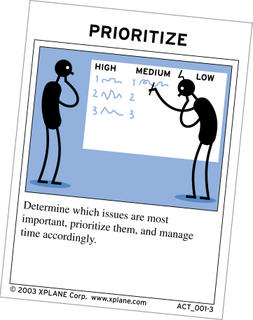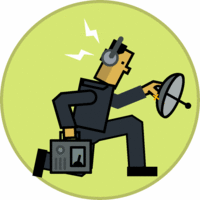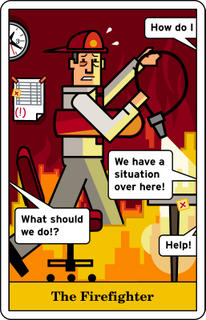Here are some templates for the email tool I have talked about in previous posts. The idea is that we can increase our productivity by putting in place some standards for measuring communication effectiveness. I strongly believe email is the place to make it happen, and that email is long overdue for a redesign.
They are high-level at the moment. I would appreciate any thoughts or ideas you might have that could make them better.
1. REQUEST
Date and time of request: [Automatically generated]
Request number: [Automatically generated]
To: Name
Cc:
Subject: Request: [What I want you to do] -- RSVP
Hi [Name],
Please [request].
Please respond with a yes or no by [Expiration date]
[YES] [NO] [Please clarify] (html buttons)
If you need any more information please contact me at [Contact info].
[Signature]
2. ORDER
Date and time of order: [Automatically generated]
Order number: [Automatically generated]
To: Name
Cc:
Subject: Order: [What I want you to do] -- RSVP
Hi [Name],
Please [order].
Please respond with a yes or no by [Expiration date]
[YES] [NO] [Please clarify] (html buttons)
If you need any more information please contact me at [Contact info].
Signature
3. CONFIRMATION
Date and time of confirmation: [Automatically generated]
Confirmation number: [Automatically generated]
To: Name
Cc:
Subject: Confirmation: [Item for confirmation] -- RSVP
Hi [Name],
This is to confirm that [Item to be confirmed].
Please reply to confirm the above by [Expiration date]
[Confirmed] [Not confirmed] [I have a correction] (html buttons)
If this is unclear in any way please contact me at [Contact info].
Signature
4. INFORMATION/REPLY REQUESTED
Date and time of message: [Automatically generated]
Message number: [Automatically generated]
To: Name
Cc:
Subject: FYI: [Information] -- RSVP
Hi [Name],
[Reason for sending information].
[Information].
Please confirm that you have received and understood this by [Expiration date]
[Acknowledged] [Please clarify] [I have a correction] (html buttons)
If this is unclear in any way please contact me at [Contact info].
Signature
5. INFORMATION
Date and time of message: [Automatically generated]
Message number: [Automatically generated]
To: Name
Cc:
Subject: FYI: [Information]
Hi [Name],
[Reason for sending the information].
[Information].
If this is unclear in any way please contact me at [Contact info].
Signature
6. NO
Date and time of message: [Automatically generated]
Message number: [Based on incoming message]
To: Name
Cc:
Subject: Declined: [Initial subject line]
Hi [Name],
In regard to your [Request, order, confirmation] (Below), I am declining for the following reason(s)
[Reason(s) for declining].
If this is unclear in any way please contact me at [Contact info].
Signature
[Initial email]
7. NOT CONFIRMED
Date and time of message: [Automatically generated]
Message number: [Based on incoming message]
To: Name
Cc:
Subject: Not confirmed: [Initial subject line]
Hi [Name],
In regard to your email (Below), I cannot confirm for the following reason(s)
[Reason(s)].
If this is unclear in any way please contact me at [Contact info].
Signature
[Initial email]
8. REQUEST FOR CLARIFICATION
Date and time of message: [Automatically generated]
Message number: [Based on incoming message]
To: Name
Cc:
Subject: Request clarification: [Initial subject line]
Hi [Name],
In regard to your email (Below), can you please clarify the following?
[Information that needs clarification].
If this is unclear in any way please contact me at [Contact info].
Signature
[Initial email]
9. CORRECTION
Date and time of message: [Automatically generated]
Message number: [Based on incoming message]
To: Name
Cc:
Subject: Correction: [Initial subject line]
Hi [Name],
In regard to your email (Below), please allow me to clarify the following:
[Correction].
If this is unclear in any way please contact me at [Contact info].
Signature
[Initial email]
Keep in touch! Sign up to get updates and occasional emails from me.
 Like many people I have struggled over many years to learn how to be a good manager. If you have ever managed a team, you know how hard it can be. One day, in a moment of sheer frustration, I asked a wise man “When is it okay to be angry?”
Like many people I have struggled over many years to learn how to be a good manager. If you have ever managed a team, you know how hard it can be. One day, in a moment of sheer frustration, I asked a wise man “When is it okay to be angry?”


















